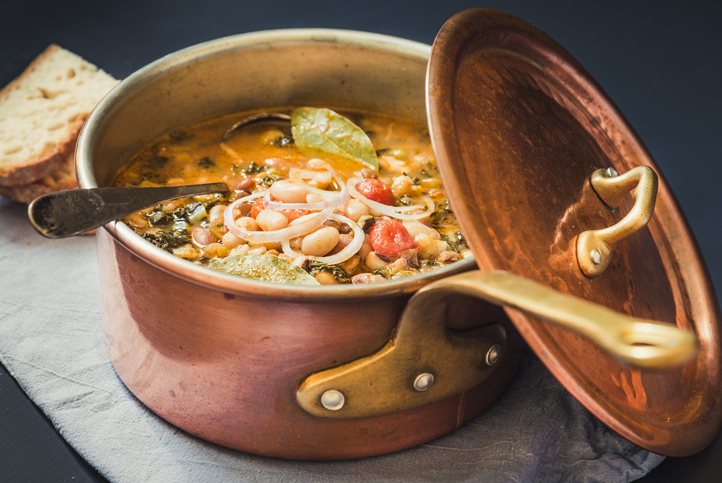Tuscany is one of the most popular regions in Italy for visitors and this has plenty to do with the region’s delicious cuisine. Many foreign visitors don’t realize how regional Italian food can be; although it is now possible to get most things in most regions, some traditional local food has been around for centuries and long-standing recipes are closely observed.
While in Tuscany, here are some of the absolute must-try dishes. The diet can wait until you get home!
Bistecca alla Fiorentina
Bistecca alla Fiorentina (literally, Florentine-style steak), is Tuscany’s most famous dish and definitely a vegetarian-free zone. It’s not hard to come by, particularly in Florence, but it isn’t always done properly. Of prime importance is the origin of the meat, typically Chianina cattle, an ancient Tuscan breed prized for its delicious meat. The correct cut is a T-bone or porterhouse, at least 3 inches thick and weighing 3-3½ pounds. A traditional Bistecca is cooked simply, over red-hot coals and seasoned with rosemary, sage, salt, and pepper, and usually served rare or “al sangue.” It is traditionally accompanied by a salad or cannellini beans served with olive oil.
Cacciucco
If meat isn’t your thing, the Tuscan coast has plenty of fresh fish and seafood to offer. One of the most typical dishes is a type of fish stew known as cacciucco and traditionally made in the Tuscan port town of Livorno. It contains octopus, squid, mussels, clams, and langoustines, as well as whatever fresh fish comes in off the boat that day. With fennel seeds, chili flakes, and garlic involved in the base, the stew’s depth of flavor is unrivalled.
Hearty soups
Tuscans have long been affectionately nicknamed “mangiafagioli” or bean-eaters because so much of the region’s rustic cuisine is based on pulses rather than the pasta or rice you might find in other parts of in Italy. These locally-grown beans are often used to make hearty soups, such as ribollita. Filled with chunky vegetables and beans, this is comfort food at its best and perfect if you’re visiting the region in winter. Another equally delicious and filling Tuscan soup is pappa al pomodoro, made using tomatoes, basil, and stale or leftover bread, all of which combine in an incredible mix of flavors.
Panforte and Sienese biscuits
Tuscany boasts no shortage of treats for those with a sweet tooth. The preserved medieval city of Siena, best known for its annual horserace or palio, is the place to be for traditional delights such as panforte (literally, strong bread). Originally made at Christmas for the city’s aristocratic population, since its ingredients were extremely costly, panforte is a gooey dessert made from almonds, candied fruits, honey, and spices. It comes in white and black versions, the latter darkened with the addition of cocoa powder. Siena is also well known for its traditional biscuits, such as soft almond ricciarelli and sweet walnut cavallucci. They are all delicious sampled with a glass of dessert wine such as Vin Santo or Moscadello di Montalcino.
Local food, local wine
Across Italy, the saying when it comes to the cuisine is always “local food, local wine”. Considered the only way to enjoy everything a region has to offer, the local food is always at its best when paired with a wine produced nearby. This is particularly true of hearty meat dishes such as Bistecca alla Fiorentina, which comes into its own with a good local red, such as Chianti Classico.
Tuscany’s best restaurants
Tuscany proudly boasts a huge number of Michelin-starred restaurants. One of these, Enoteca Pinchiorri in Florence, has three stars and has represented the very best in Italian fine dining for decades. The region is also home to five two-starred restaurants, including the Piccolo Principe in the walled town of Lucca and Caino in the tiny hamlet of Montemerano. There are as many as 36 one-starred restaurants in Tuscany, including La Magnolia in the coastal resort town of Forte dei Marmi, Il Pievano in Gaiole in the heart of Chianti country, and Ristorante Al 43 in the hilltop town of San Gimignano, renowned for its many towers.

